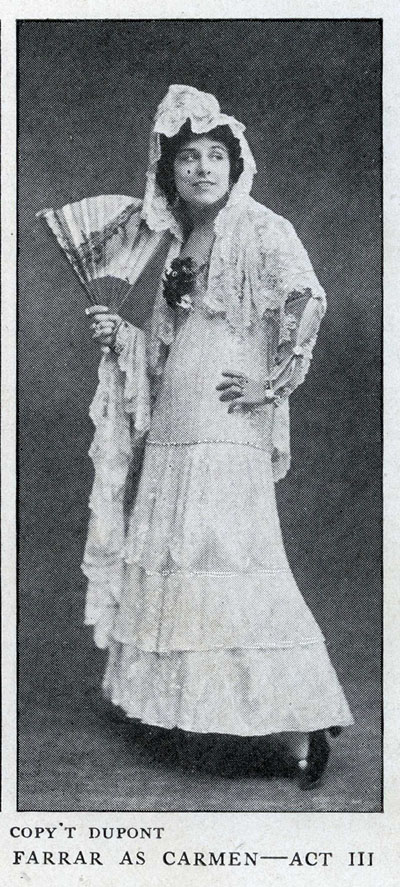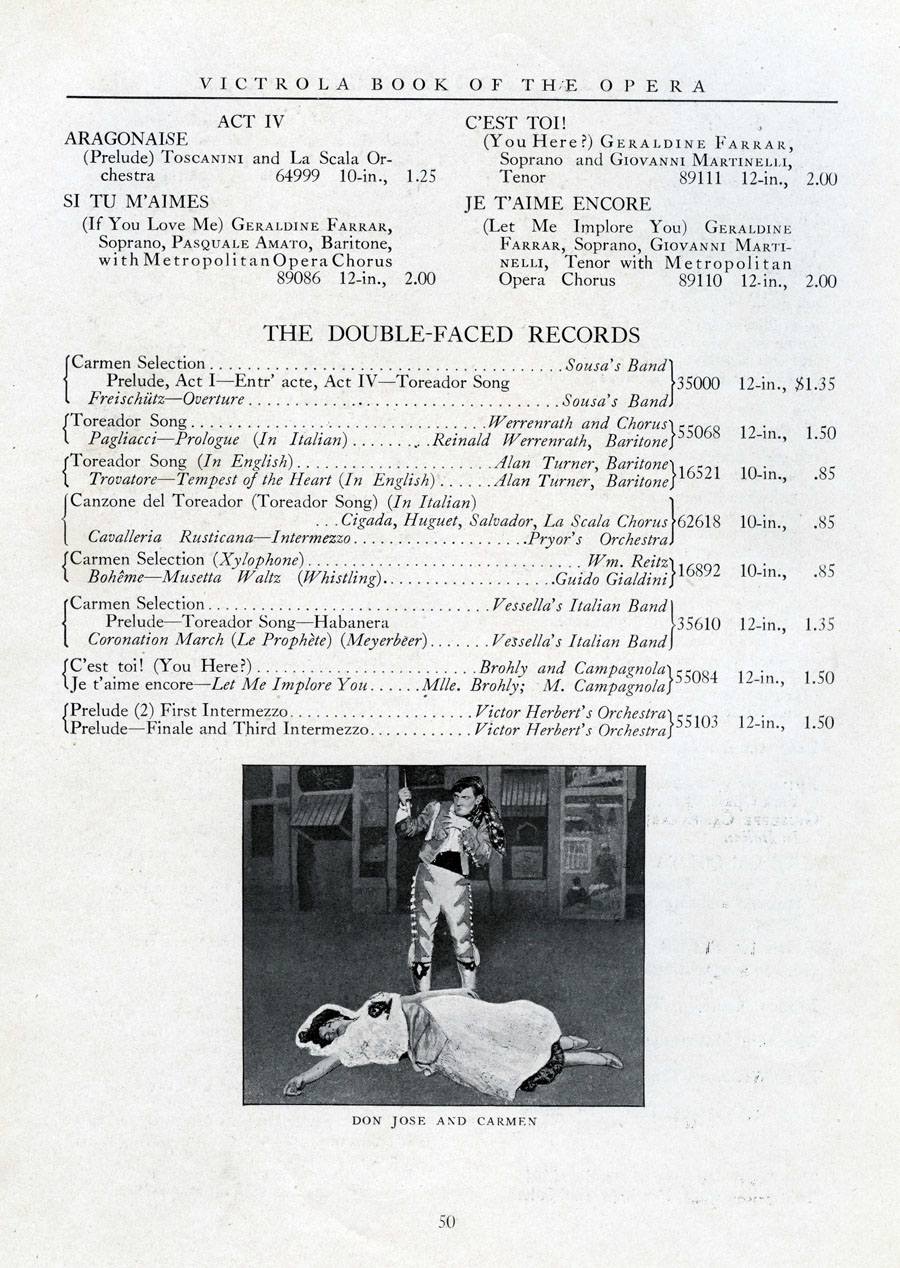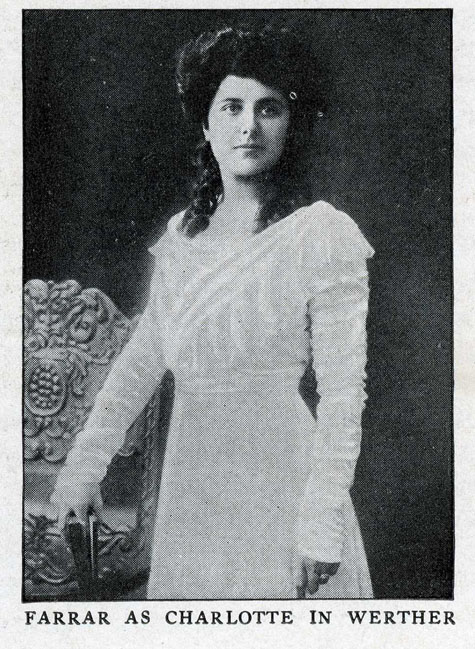The
Victor Book of the Opera

Featuring
Geraldine Farrar in Victor's 1921 Edition
The
Victor Talking Machine Company published The Victor Book of the
Opera from 1912 - 1976.
The
1921 edition used in this gallery included the "Stories of
Seventy Grand Operas." Geraldine Farrar is used as an example
of how opera recording stars were featured in promoting opera, opera
records and the respective Victor recording artists.
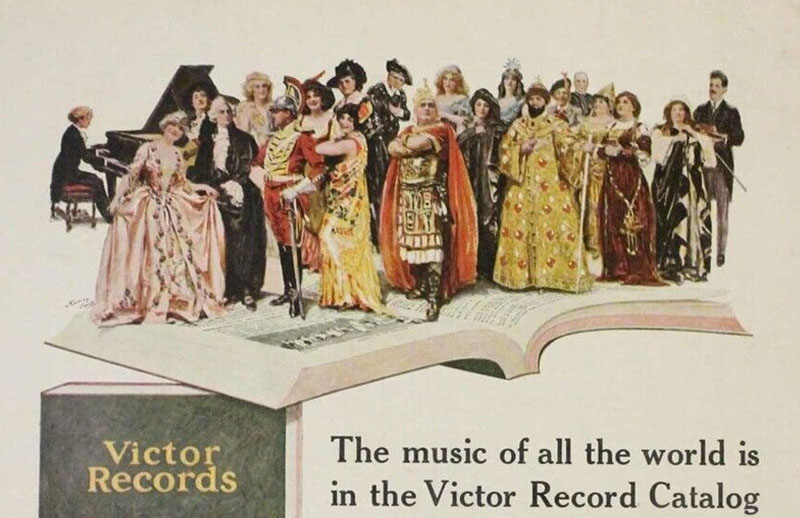
Illustration from a 1923 Victrola magazine
ad for the Victor Record Catalog.
The foreward to the 1912
first edition of The Victor Book of the Opera exemplifies
how the Victor Company combined its advertising and the 'education'
of the public by publishing their book of opera stories with its
illustrations, descriptions and record catalogues.
“During the recent season several
hundred performances of grand opera, at an estimated cost of
millions of dollars, were given in the United States. This great
outlay for dramatic music alone would not have been possible
had it not been for the increased interest aroused in opera
by the widespread distribution by the Victor during the past
ten years of hundreds of thousands of grand opera records, at
varying prices… For every person who cannot attend the opera
there are a hundred who cannot. However, many thousands of lovers
of the opera in the latter class have discovered what a satisfactory
substitute the Victor is, for it brings the actual voices of
the great singers to the home, with the added advantage that
the artist will repeat the favorite aria as many times as may
be wished, while at the opera one must usually be content with
a single hearing…”
The shrewdness of The Victrola
Book of the Opera publication was observed in a review of
the 1924 edition by William Braid White for Talking Machine
World and quoted here by Allan Sutton from his 2008 work Recording
the Twenties: The Evolution of the American Recording Industry,
1920-29.
“Here is something which
even the veriest moron can understand, but which is not unworthy
of the attention of the most learned music lover. Every sale of
this book, in fact, means that one more man or woman has been
started on the way to become an enthusiastic buyer of Victor Records.
The Victor Book of the Opera is not only a fine piece of
artistic propaganda, but a very shrewd piece of publicity; and
the best of it is that every party to it reaps a profit from its
existence.” (Courtesy of Library of Congress and Allan Sutton,
Mainstream Press).
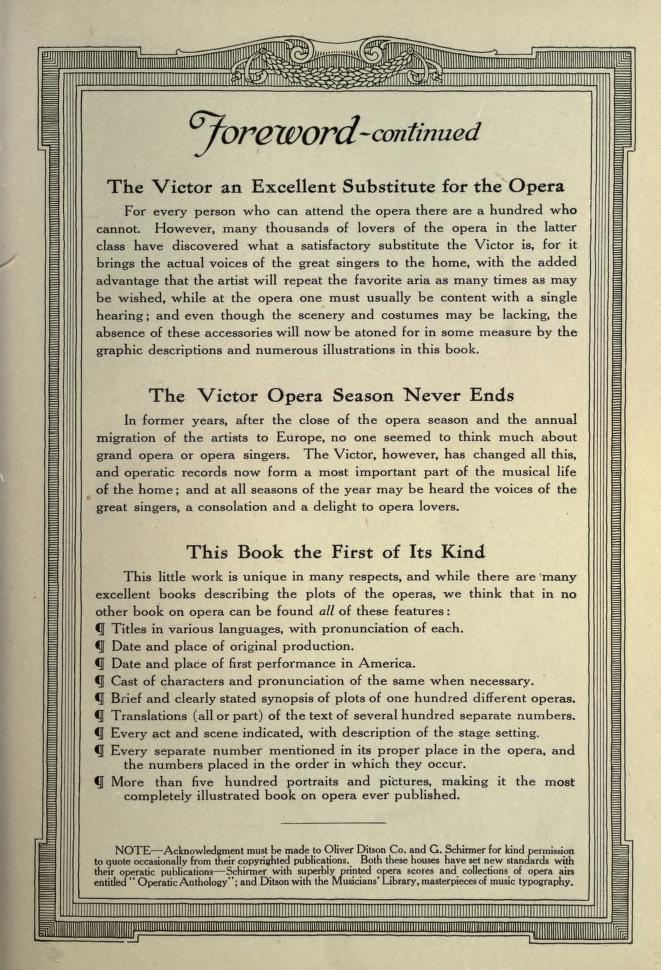
Foreward from the 1913
edition The Victor Book of the Opera.
"This Book the First
of Its Kind" -- "we think that in no other book on opera
can be found all of these features," i.e., the nine
listed features including "more than five hundred portraits
and pictures, making it the most completely illustrated book on
opera ever published."
An Interactive "The Victrola
Book of the Opera"
The Library of Congress has published
an interactive edition of 1919
The Victrola Book of the Opera which has links for to
nearly every song in the book.
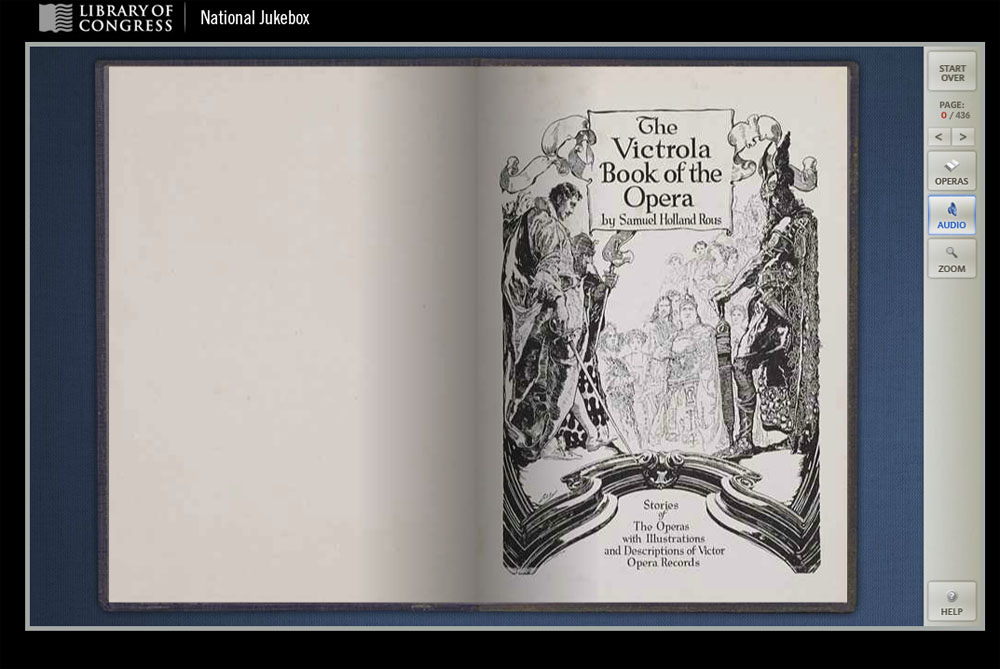
This 1919 edition of
the Victrola Book of the Opera describes more than 110 operas,
and is reproduced as an interactive digital facsimile. It includes
plot synopses and lists of recordings the Victor Talking Machine
Company offered in 1919. In addition to reading the original text,
you can listen to nearly every recording listed in the book and
even compare different interpretations of the most popular arias
of the period. (Courtesy of the Library of Congress)
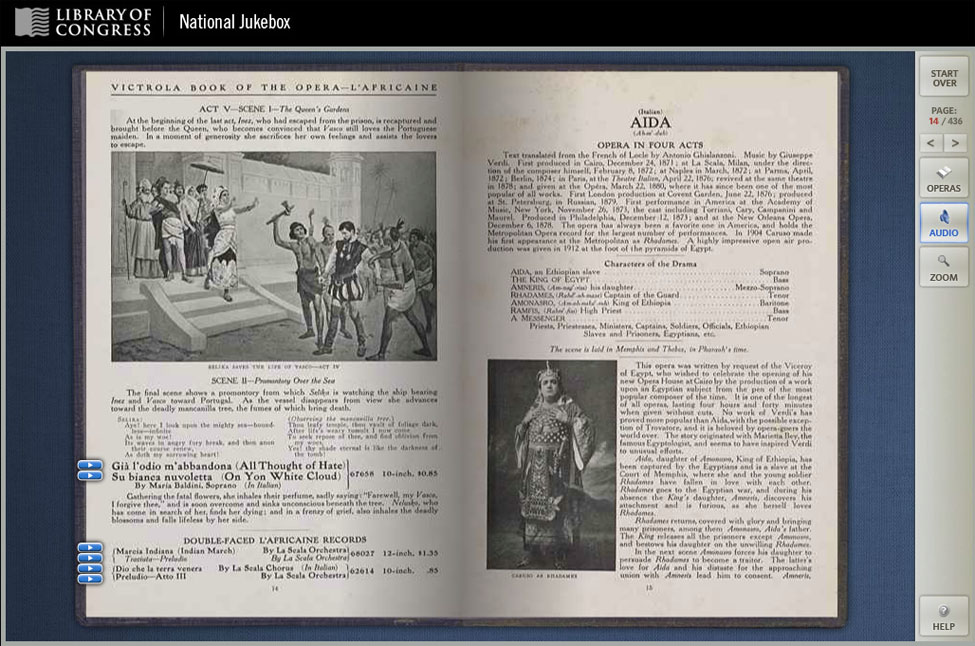
The Internet Archive has also published
the Victor
Book of the Opera series starting with the 1912 edition.
Geraldine Farrar,
1921
Opera stories, illustrations and
the marketing of the respective Victor Opera Records appeared
in The Victrola Book of the Opera. The following examples
feature Geraldine Farrar as seen in Victor's 1921 edition of the
book.
La Bohême by Puccini
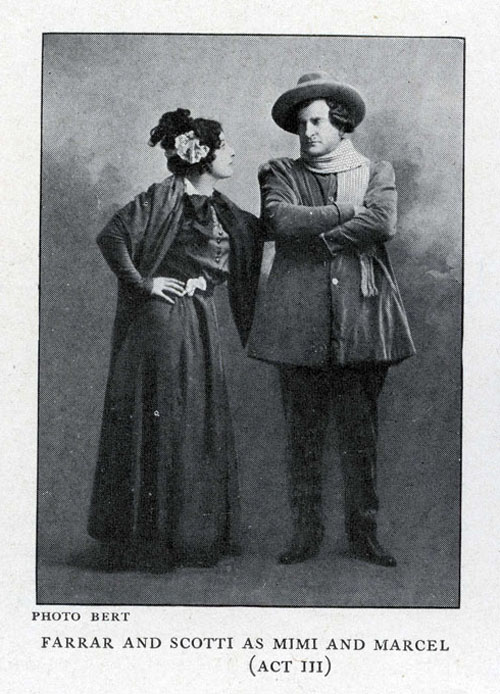
La Bohême,
Act III, p. 26
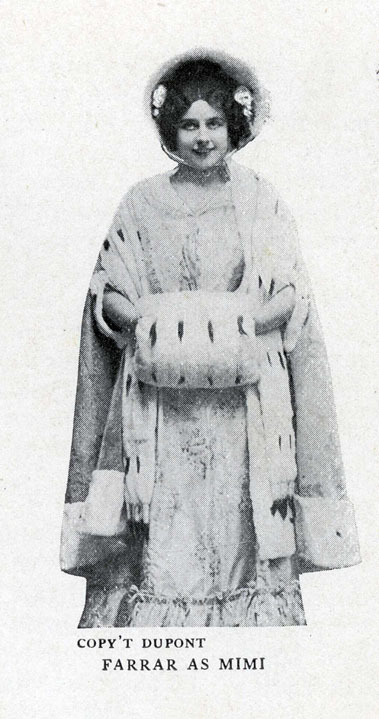 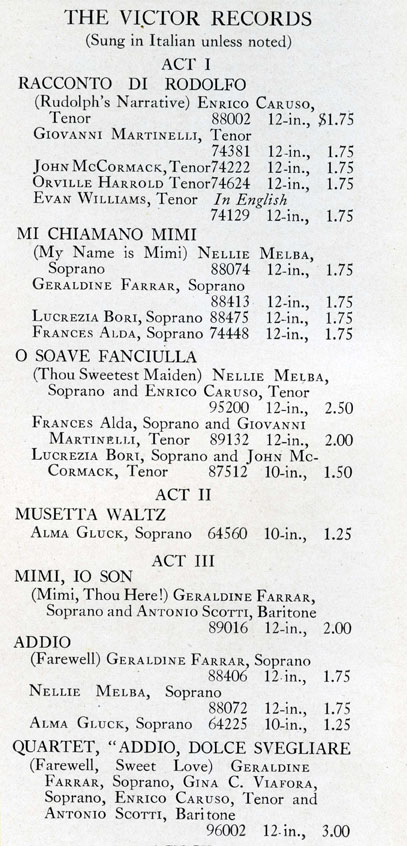
Carmen p. 38
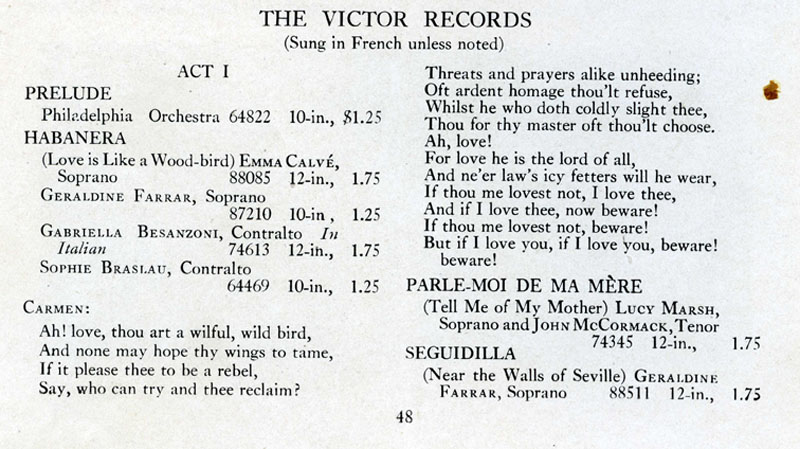
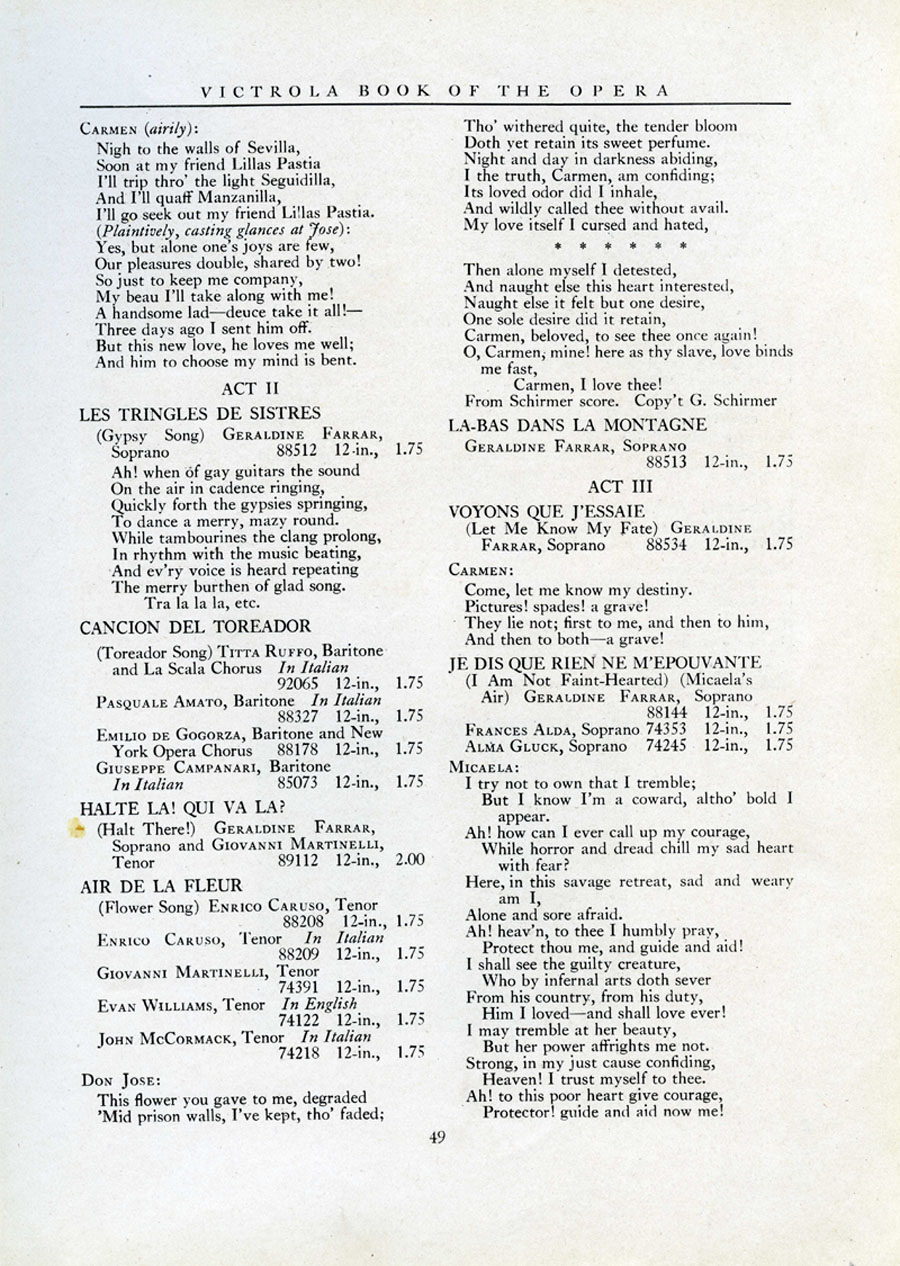
Faust by Gounod
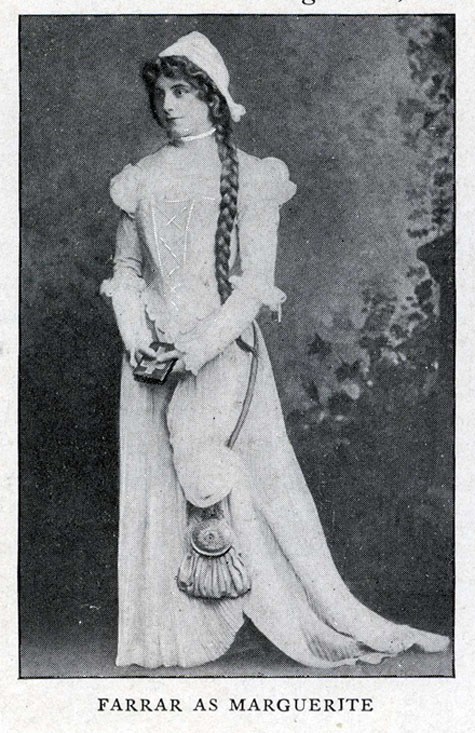
Faust, p. 98
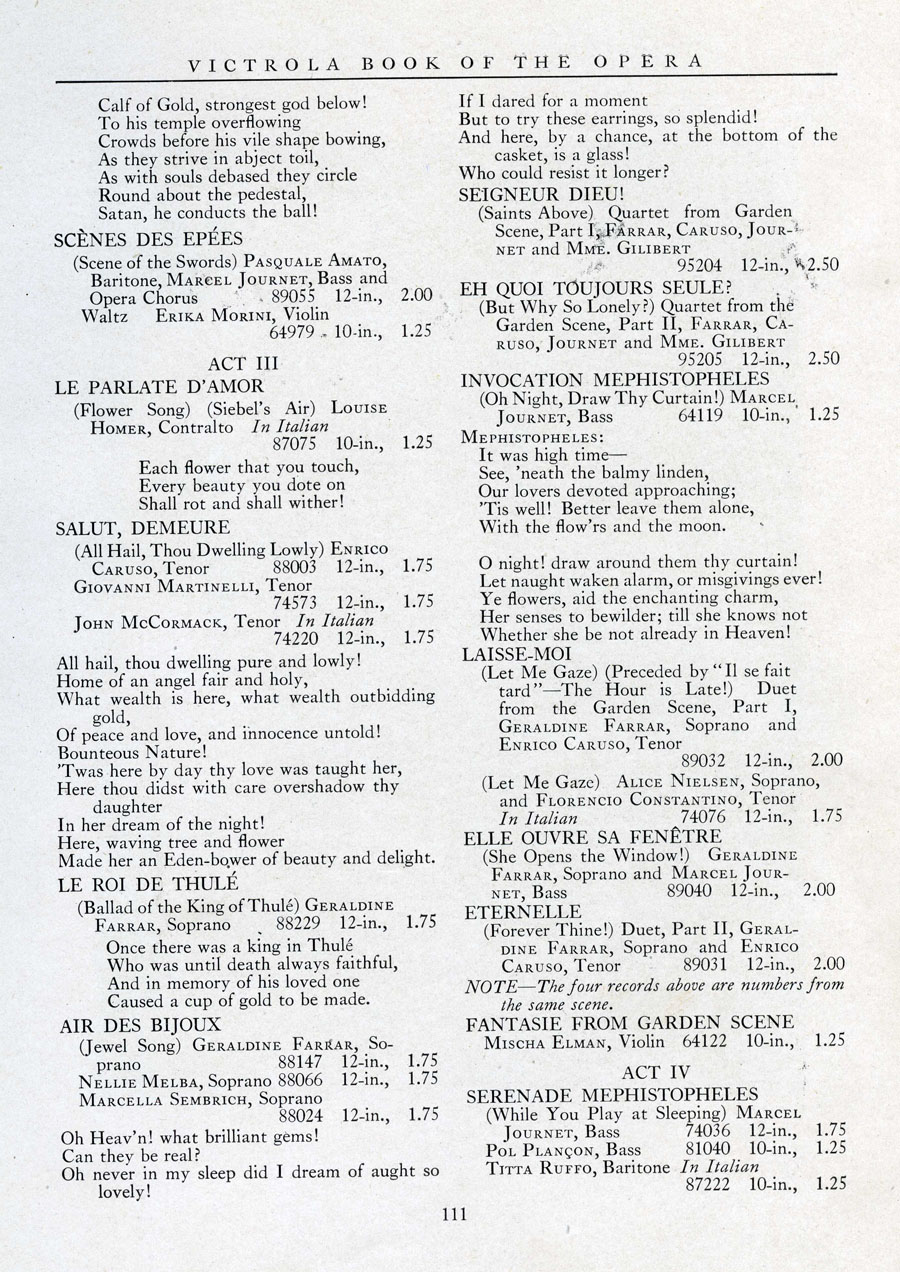
Faust, p. 111
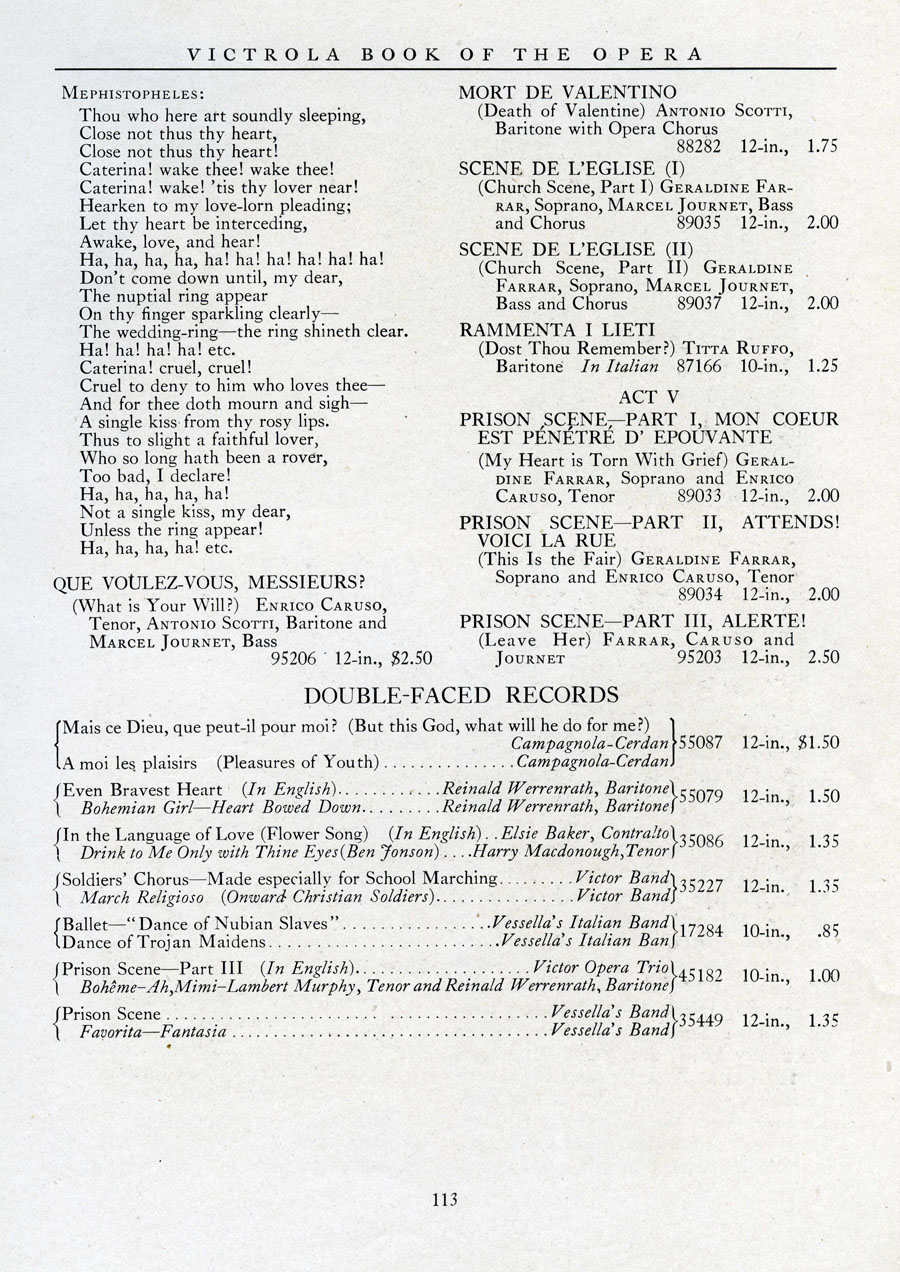
Faust, p. 113
Madame Butterfly by Puccini
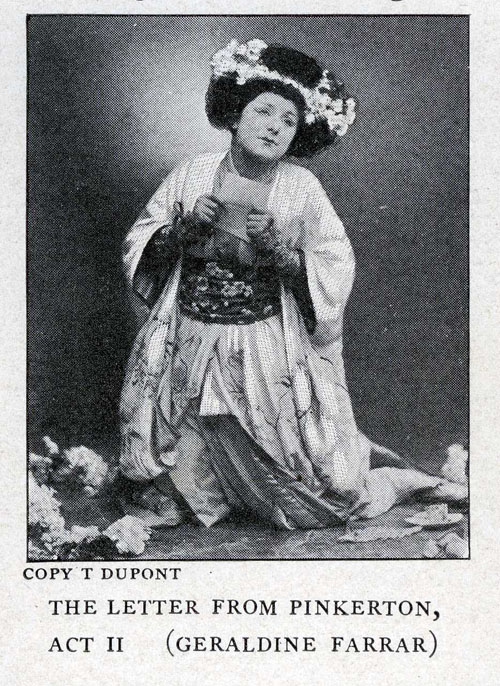
Madame Butterfly p.
209
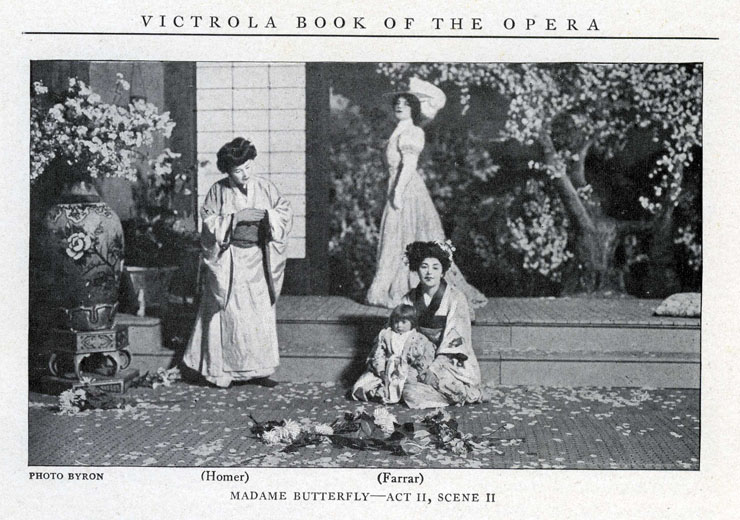
Madame Butterfly p.
211
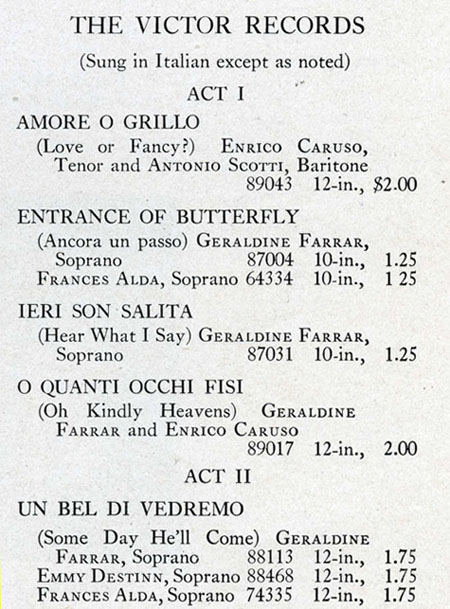
Madame Butterfly p.
211
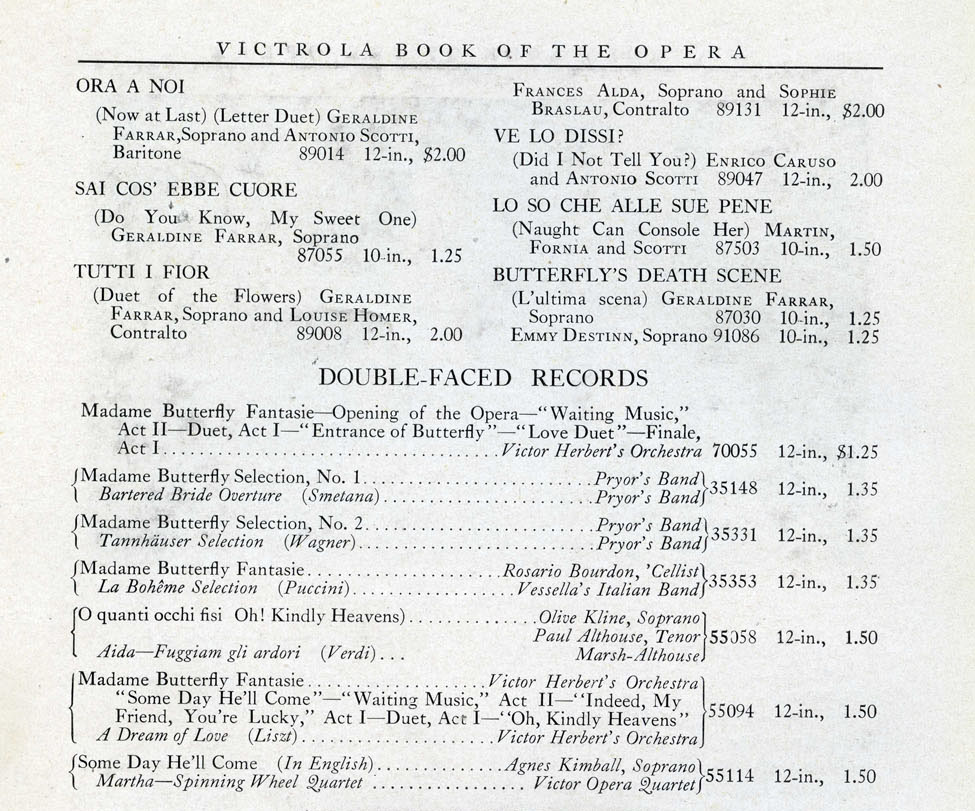
Madame Butterfly p.
212
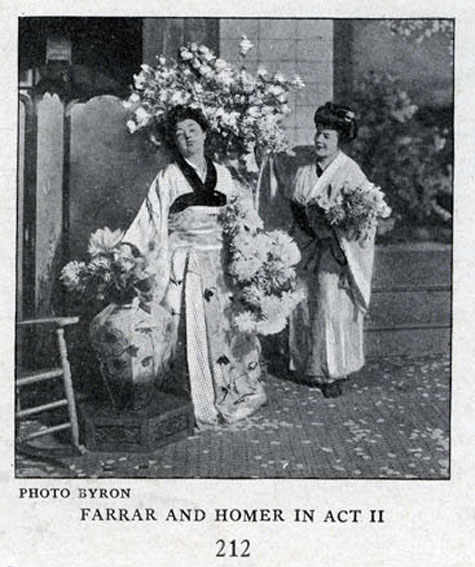
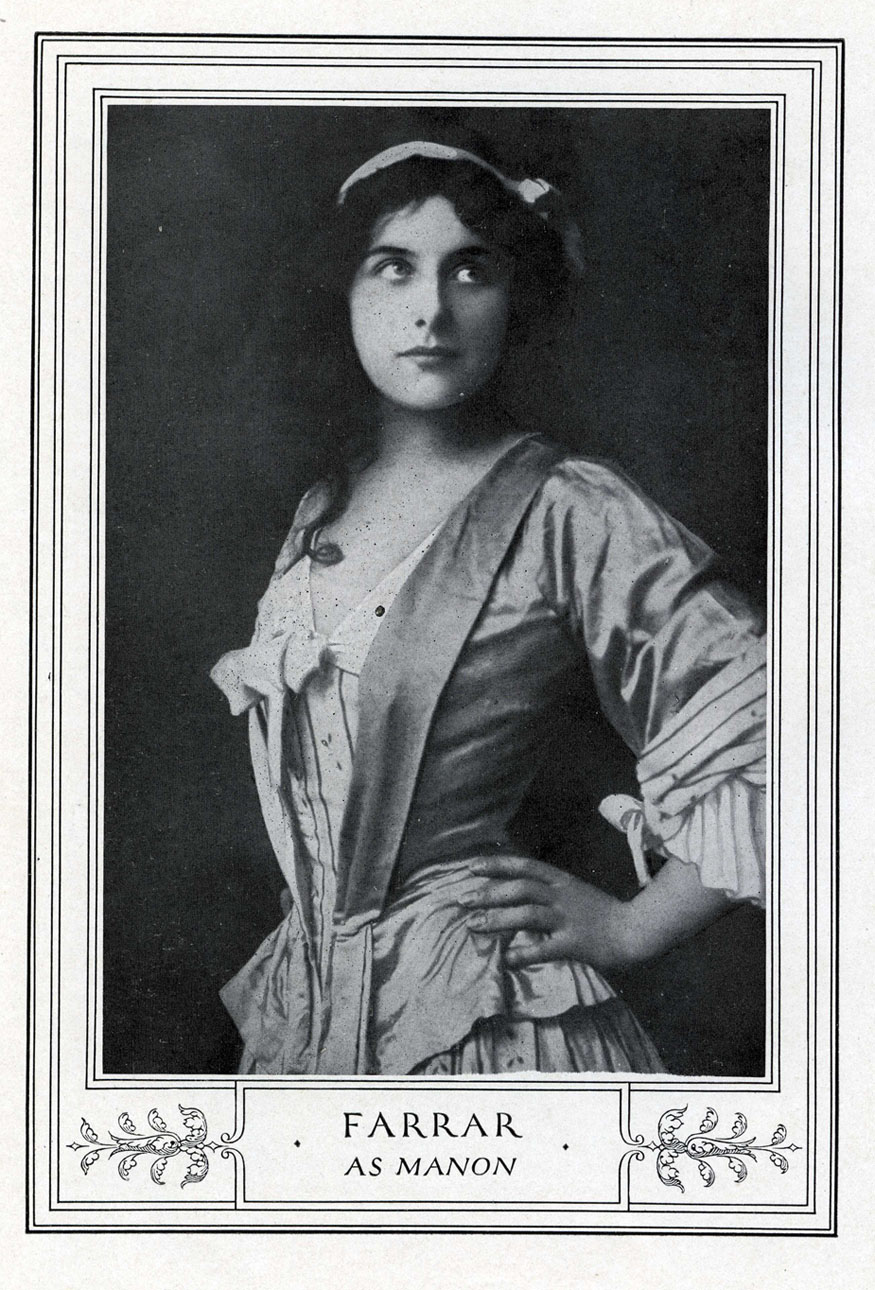
Manon, p. 220
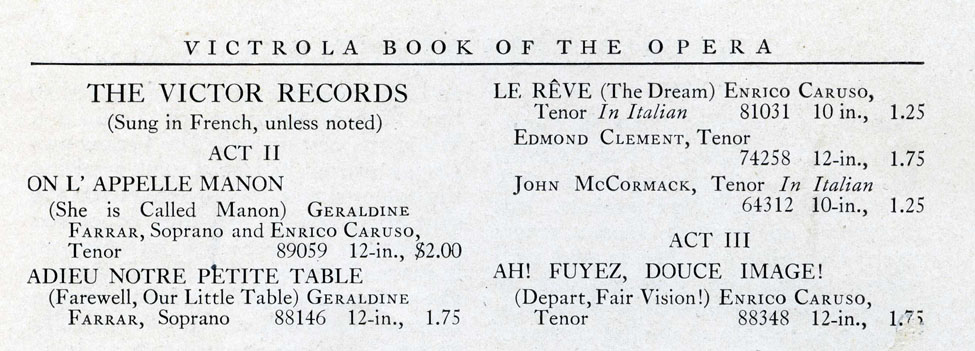
Manon, p. 226
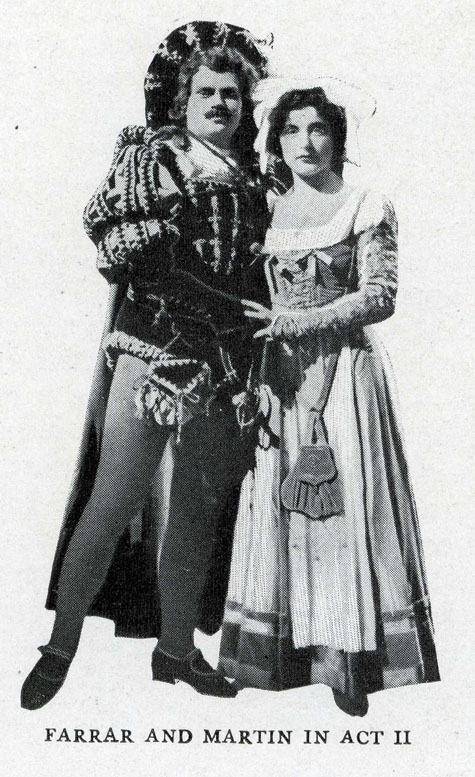
Mefistofele, p. 252
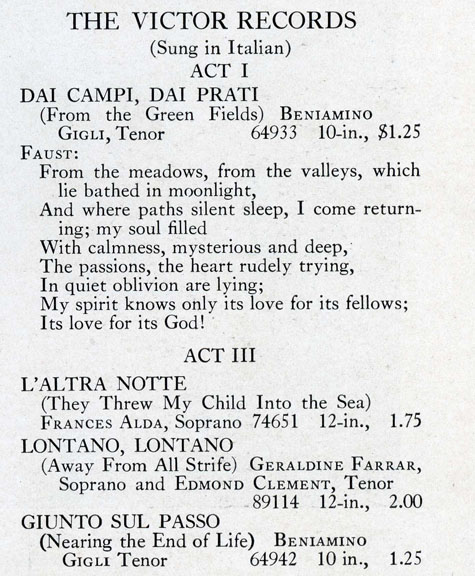
Mefistofele, p. 255
Pagliacci by Mascagni
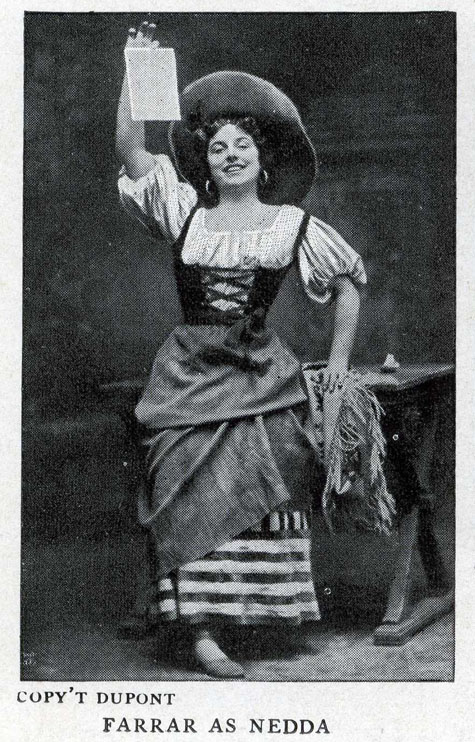
Pagliacci, p. 288
Rigoletto by Verdi
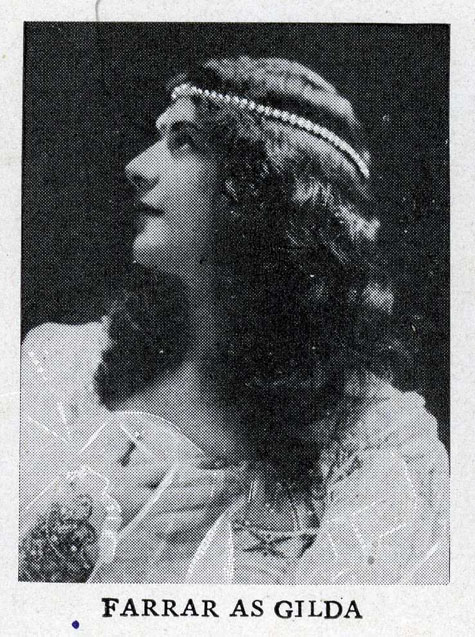
Rigoletto, p. 336
Romeo et Juliette
by Gounod
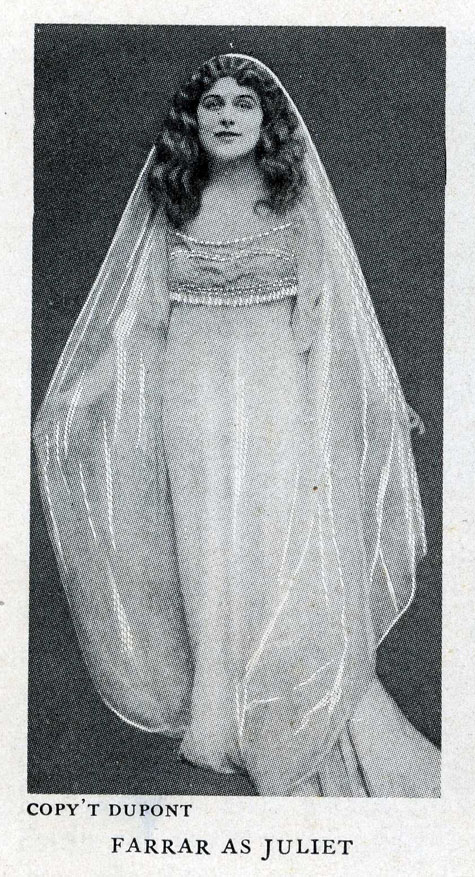
Romeo et Juliette, p.
350

Romeo et Juliette, p.
354
Tannhäuser by Wagner
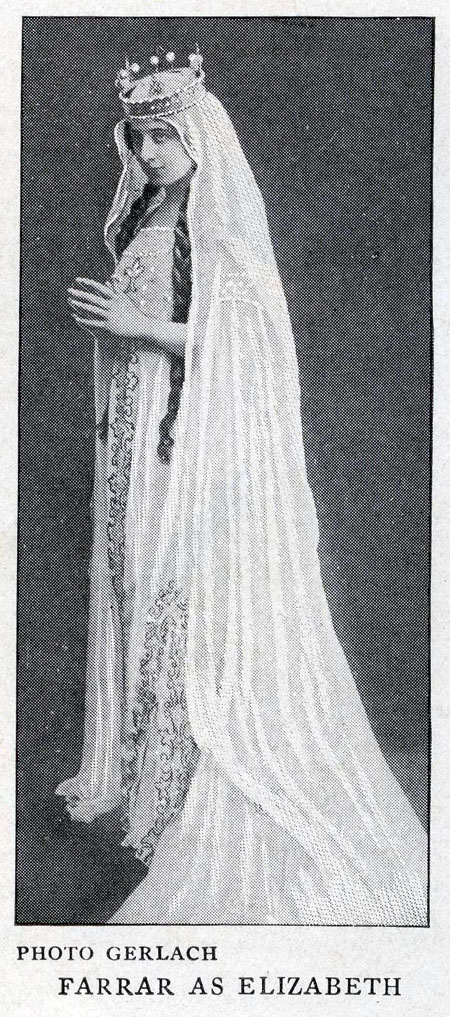
Tannhäuser, p.
382
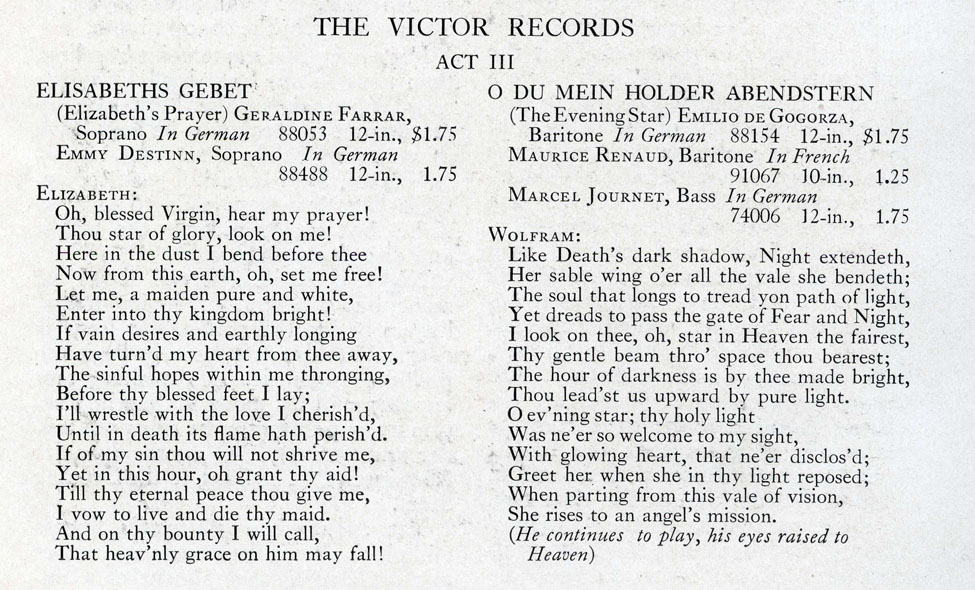
Tannhäuser, p.
386
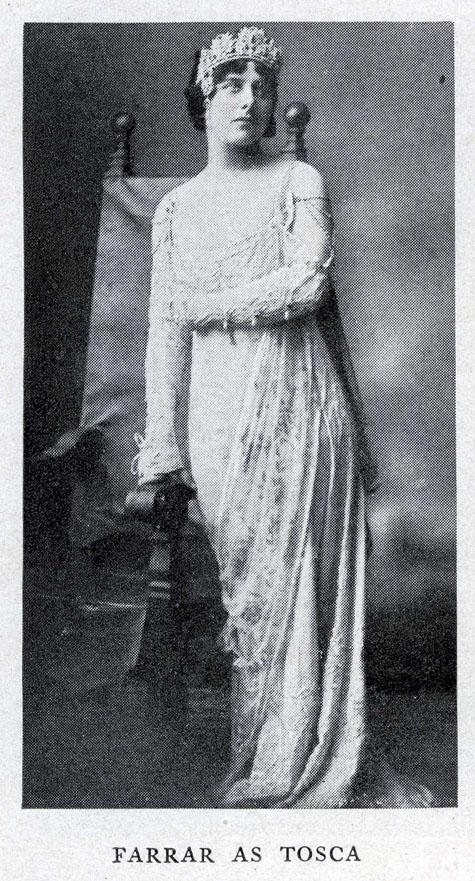
Tosca, p. 395
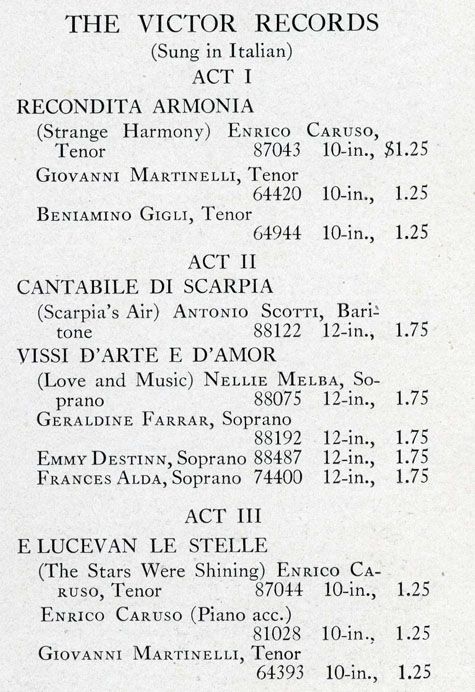
Tosca, p. 397
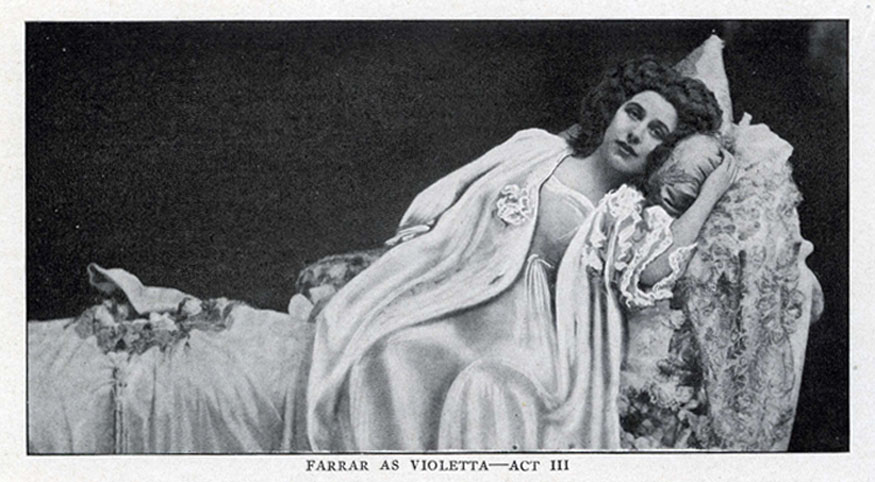
La Traviata, p. 398
Werther by Massenet
Zaza by Leoncavallo
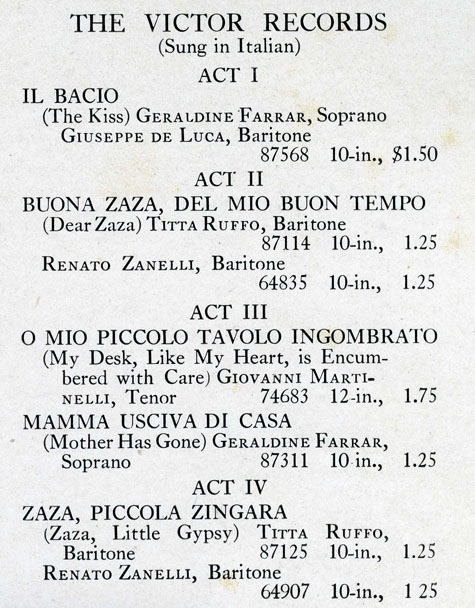
Victor published monthly record catalogs
which included opera records but The Victor Book of the
Opera was targeted for potential opera lovers listing Victor
records available for purchase for every opera in its book.

"The music of all
the world is in the Victor Record Catalog." 1923
The Columbia Graphophone Company did
not offer anything comparable to Victor's Book of the Opera.
Like Victor and other record companies Columbia had record catalogs
and called their Columbia Records catalog an "encyclopedia
of the world's best music, new and old." Every page was said
to be full of fascinating suggestions with "all the joy of
anticipation."
Columbia's "big message for music
lovers"? "All the music of all the world is yours on the
Columbia Grafonola."
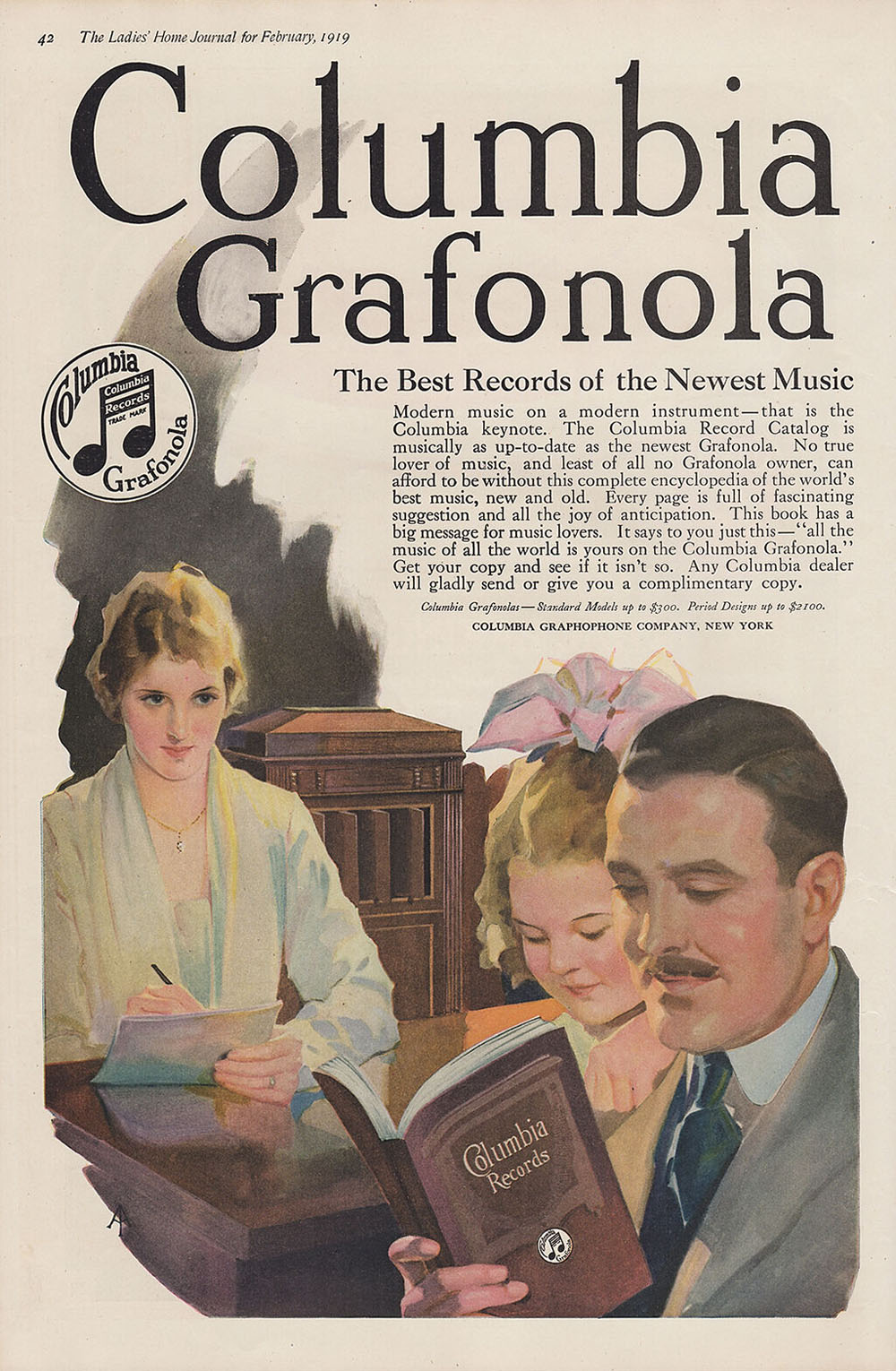

Phonographia
|
